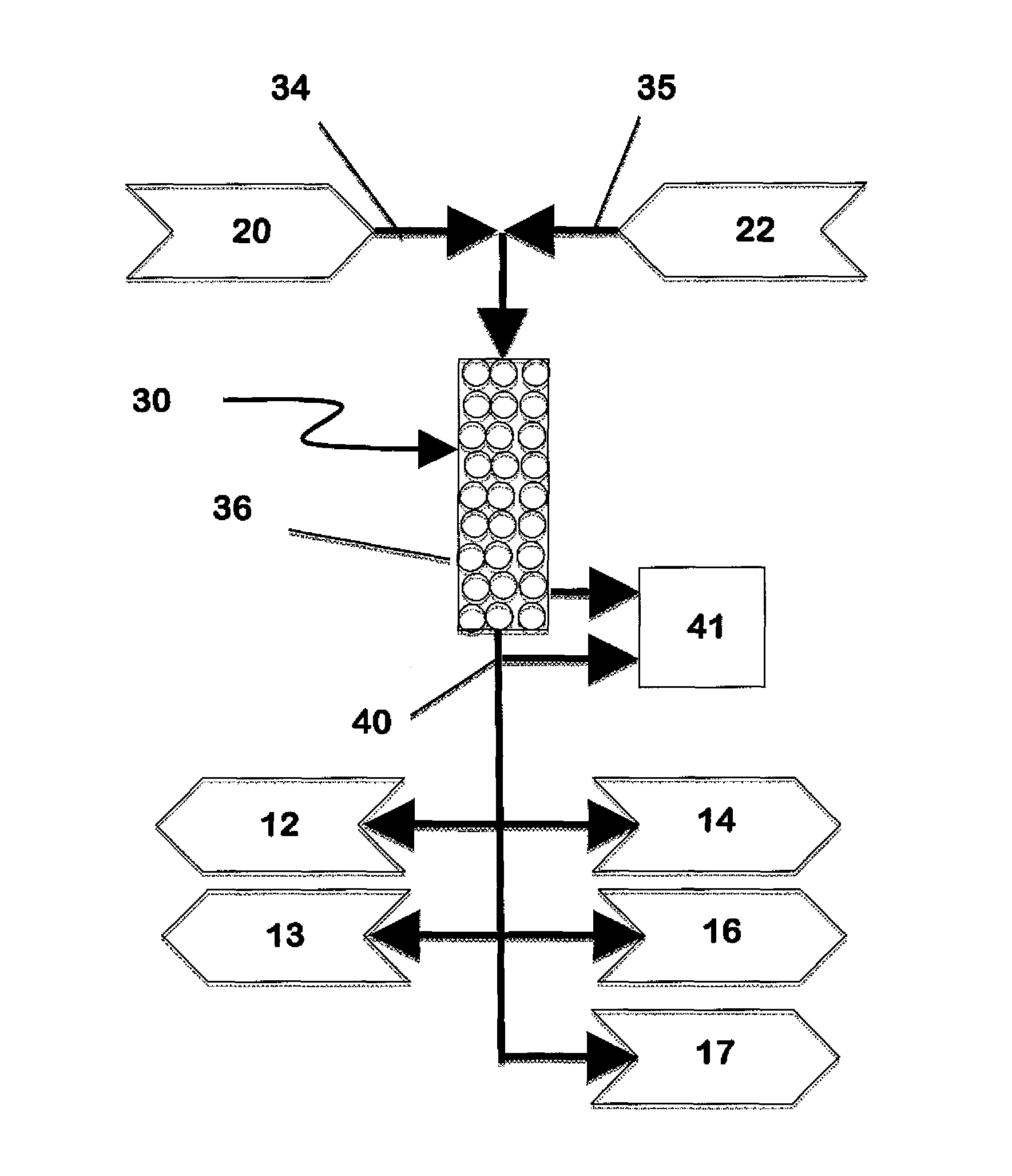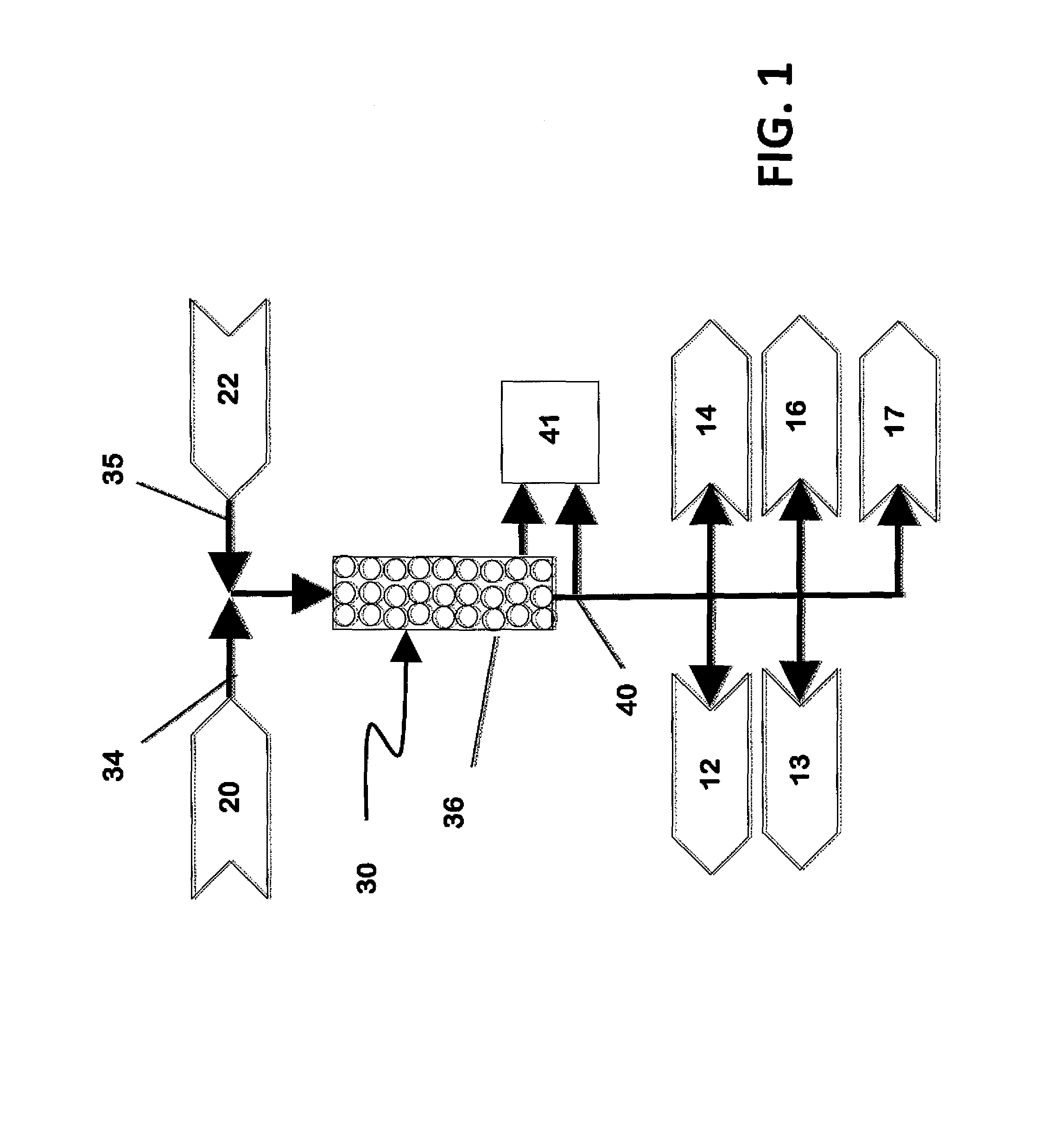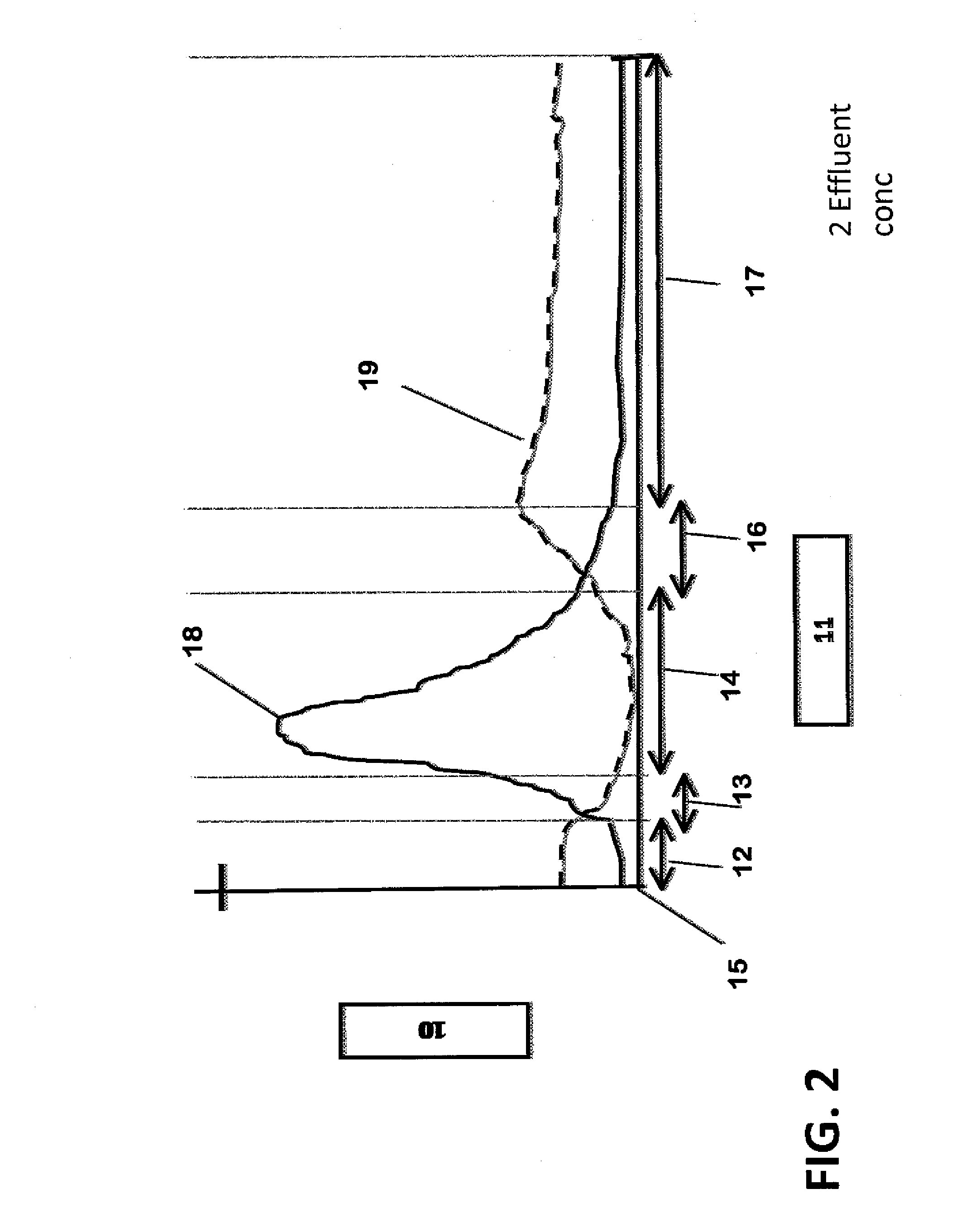Selective removal of dissolved substances from aqueous solutions
a technology of dissolved substances and aqueous solutions, applied in the field of water treatment, can solve the problems of contaminating local fresh water supplies, high cost of precipitation chemicals and safe sludge disposal, and high level of local truck traffic to transport wastewater, so as to reduce the demand for scarce fresh water resources
- Summary
- Abstract
- Description
- Claims
- Application Information
AI Technical Summary
Benefits of technology
Problems solved by technology
Method used
Image
Examples
Embodiment Construction
[0029]The following detailed description represents the best currently contemplated modes for carrying out the invention. The description is not to be taken in a limiting sense, but is made merely for the purpose of illustrating the general principles of the invention.
[0030]The present invention resides in a method and system for treating aqueous solutions for the separation of undesirable dissolved substances from water solutions containing two or more dissolved substances to produce one or more new water solutions suitable for beneficial use.
[0031]Many treatment methods that separate dissolved substances from water, such as coagulation and settling, membrane separation, adsorption, ion exchange, electrodialysis, and evaporation are well known to those skilled in the art. The applicability and cost for each treatment method depend upon many factors such as the nature and relative concentrations of the dissolved substances, the flow rate to be treated, the options available for disp...
PUM
 Login to View More
Login to View More Abstract
Description
Claims
Application Information
 Login to View More
Login to View More - R&D
- Intellectual Property
- Life Sciences
- Materials
- Tech Scout
- Unparalleled Data Quality
- Higher Quality Content
- 60% Fewer Hallucinations
Browse by: Latest US Patents, China's latest patents, Technical Efficacy Thesaurus, Application Domain, Technology Topic, Popular Technical Reports.
© 2025 PatSnap. All rights reserved.Legal|Privacy policy|Modern Slavery Act Transparency Statement|Sitemap|About US| Contact US: help@patsnap.com



